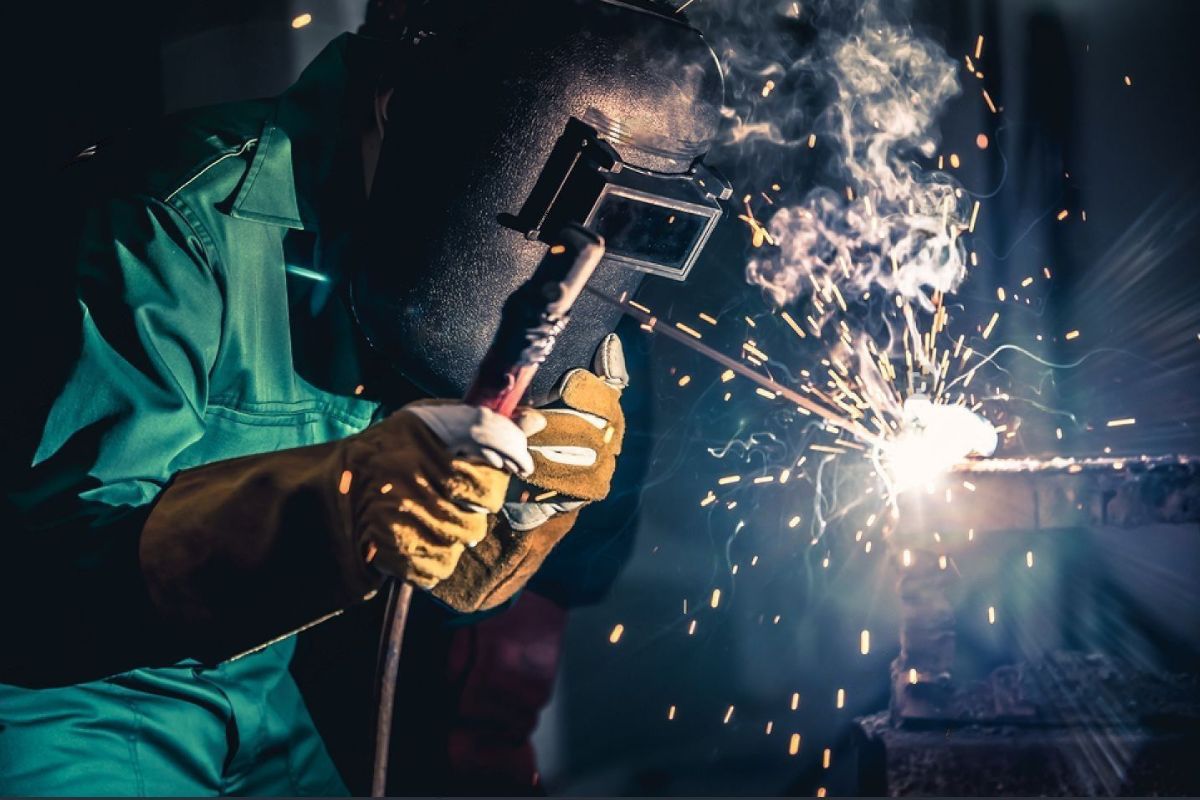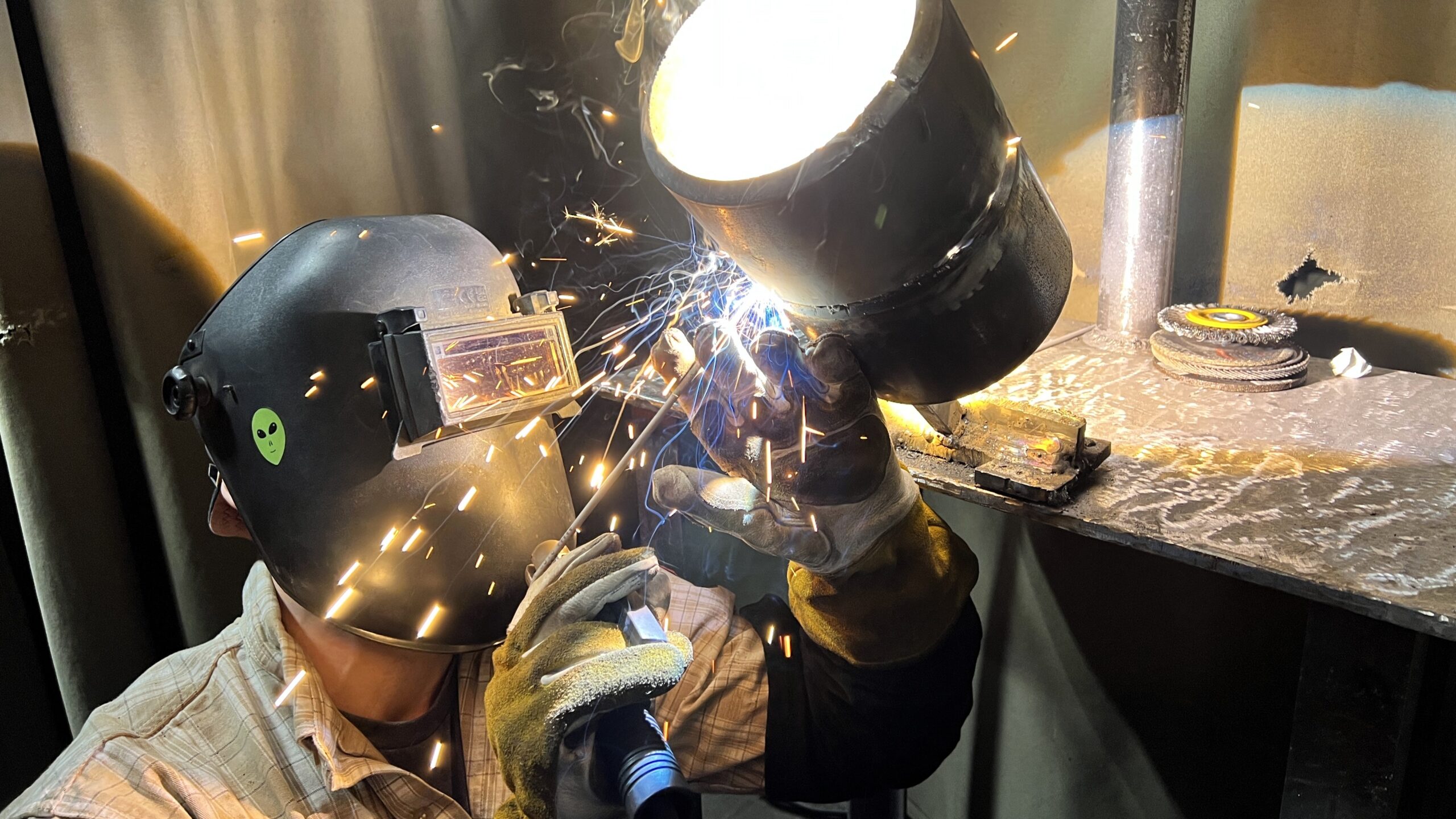What triggers weld porosity and how Belgrade Welding addresses them
Everything about Welding: Trick Insights Into Techniques and Finest Practices for Success
Welding includes a selection of strategies, each matched for specific materials and applications. Recognizing these methods, such as GMAW, SMAW, and TIG, is necessary for attaining perfect results. In addition, the right tools and safety techniques can not be ignored. As preparation and troubleshooting play critical duties in the welding procedure, mastering these components can significantly enhance the quality of the final item. What are the crucial variables that ensure an effective weld?
Understanding Various Welding Methods
Welding methods incorporate a variety of methods, each suited to particular applications and materials. Amongst one of the most typical techniques are Gas Steel Arc Welding (GMAW), Shielded Steel Arc Welding (SMAW), and Tungsten Inert Gas Welding (TIG) GMAW, likewise referred to as MIG welding, is popular for its rate and adaptability, making it ideal for thin materials. SMAW, or stick welding, is favored for its simpleness and effectiveness in outside environments, especially with thicker steels. TIG welding uses precision and control, making it appropriate for elaborate job and non-ferrous steels (Montana Mobile Welding and Repair Belgrade Welding). Each method has its special advantages and considerations, permitting welders to choose the most effective approach based upon the job's demands, product kind, and wanted outcomes. Comprehending these methods is necessary for successful welding
Important Welding Tools and Devices
While numerous welding techniques call for particular abilities, the ideal tools and devices are just as important for achieving quality results. Crucial welding equipment includes welding makers, which differ depending on the strategy-- such as MIG, TIG, or stick welding. Protective equipment, including aprons, gloves, and safety helmets, warranties security and comfort throughout the process. On top of that, components and clamps help protect materials in position, guaranteeing accuracy in welds. Consumables like welding poles, cable, and protecting gas are also crucial elements that affect the high quality of the weld. In addition, devices such as cutters and mills facilitate surface area preparation and post-weld completing, adding to a professional result. Buying top notch devices ultimately improves the performance and effectiveness of welding jobs.
Safety And Security Practices in Welding
Appropriate safety and security techniques are vital in the welding industry to secure employees from prospective threats. Welders need to wear ideal personal protective devices (PPE), including headgears with proper shading, handwear covers, and flame-resistant apparel. Appropriate air flow is essential to reduce direct exposure to hazardous fumes and gases created throughout the welding procedure. In addition, employees must be trained in the right handling of welding tools to prevent mishaps. Fire precaution, such as keeping flammable products away from the welding area and having fire extinguishers readily offered, are needed. Normal evaluations of tools and work spaces can help recognize potential dangers before they lead to crashes. By sticking to these safety techniques, welders can create a much safer working setting and reduce dangers associated with their profession.
Readying Products for Welding
Preparing materials for welding is a vital step that substantially influences the top quality and honesty of the final product (Belgrade Fabrication). Correct prep work includes cleaning the surfaces to eliminate impurities such as dirt, oil, and rust, which can endanger the weld. Methods such as grinding, fining sand, or using solvents are typically employed to achieve a tidy surface. In addition, guaranteeing that the products mesh snugly is vital; gaps can lead to weak welds. It's additionally important to take right into account the positioning and positioning of the parts, as this will influence the simplicity of welding and the last outcome. Selecting the proper filler product and making certain compatibility with the base metals is important for accomplishing strong, resilient welds.
Tips for Getting High-Quality Welds
Attaining high-grade welds needs attention to information and adherence to finest practices throughout the welding process. Proper joint preparation is essential, guaranteeing surface areas are free and clean from contaminants. Picking the suitable filler product and welding technique based on the base steels is critical for suitable bonding. Maintaining consistent traveling rate and angle while welding can promote and stop flaws harmony. In addition, regulating warm input is necessary; extreme warm can bring about warping and damaged joints. Frequently examining the welds during the process permits immediate modifications if essential. Finally, utilizing ideal post-weld treatments, such as cleansing and stress and anxiety alleviation, can enhance the durability and honesty of the weld, inevitably making sure a successful outcome.
Repairing Common Welding Issues
Welding typically offers obstacles that can affect the top quality and integrity of the last item. Usual problems such as porosity, inconsistent weld grains, and getting too hot can develop, each requiring certain troubleshooting techniques. Recognizing these problems is essential for welders to improve their skills and achieve ideal outcomes.
Porosity Problems Described
Although porosity can usually be forgotten, it stays an important concern in welding that can compromise the stability of an ended up item. Porosity refers to the existence of tiny gas pockets within the weld grain, which can lead and weaken the joint to premature failing. This issue usually develops from contaminants, moisture, or incorrect shielding gas insurance coverage during the welding procedure. To minimize porosity, welders must confirm that the base materials are dry and tidy, make use of proper securing gases, and maintain consistent welding parameters. On a regular basis evaluating the equipment and environment can also aid recognize prospective problems before they Full Report materialize in the weld. Addressing porosity efficiently is necessary for attaining solid, durable welds that satisfy high quality standards.

Inconsistent Weld Beads
Irregular weld beads can considerably affect the high quality and stamina of an ended up product. Numerous elements add to this concern, including inappropriate travel rate, wrong amperage setups, and irregular electrode angles. When the welder relocates as well quickly, a bead may appear narrow and lack penetration, while moving also slowly can trigger too much accumulation. Additionally, making use of the wrong amperage can result in either undercutting or extreme spatter, both of which compromise weld integrity. The welder's strategy, such as irregular lantern movement, can likewise cause irregular grain appearance. To reduce these issues, welders need to concentrate on maintaining consistent, regulated activities and making certain proper equipment settings to accomplish uniformity in their welds. Consistency is key to accomplishing trusted and strong welds.
Overheating and Bending Issues
Excessive heat throughout the welding procedure can cause considerable overheating and deforming concerns, impacting the architectural honesty of the work surface. These problems typically manifest as distortion, which can endanger alignment and fit-up, making additional assembly challenging. Elements adding to overheating consist of the choice of welding criteria, such as voltage and travel speed, as well as the sort of product being bonded. To alleviate these concerns, welders need to preserve constant traveling speed and proper warmth input while monitoring the work surface temperature. Furthermore, preheating or post-weld warm therapy can aid reduce stresses triggered by fast cooling - Fabrication. Routine inspection and adherence to best methods are crucial in preventing overheating and guaranteeing the durability and dependability of welded frameworks
Often Asked Questions
What Are the Job Opportunities in the Welding Sector?
The welding sector provides diverse profession chances, including positions as welders, teachers, designers, and examiners. Professionals can work in production, building and construction, aerospace, and automotive markets, gaining from strong need and affordable wages in various functions.
How Can I Enhance My Welding Rate Without Sacrificing High Quality?
To enhance welding rate without sacrificing high quality, one should practice effective moved here strategies, maintain equipment, optimize settings, and boost hand-eye coordination. Regular training and looking for comments can likewise significantly add to attaining much faster, top notch welds.
What Certifications Are Offered for Welders?
Countless accreditations exist for welders, including those from the American Welding Culture (AWS), the National Facility for Construction Education and Research Study (NCCER), and different industry-specific organizations. These qualifications boost employability and show ability efficiency.
Just How Does Welding Affect the Features of Metals?
Welding influences the residential or commercial properties of steels by altering their microstructure, which can bring about adjustments in toughness, hardness, and ductility. Warmth input and air conditioning rates throughout the see it here process significantly influence these material qualities.
Can I Bonded Dissimilar Metals Together?
